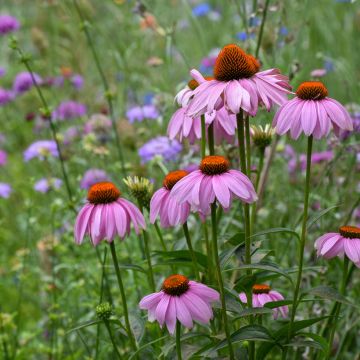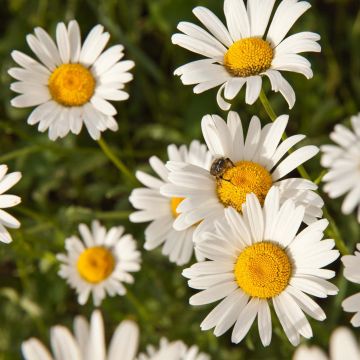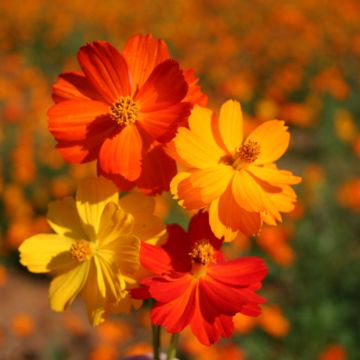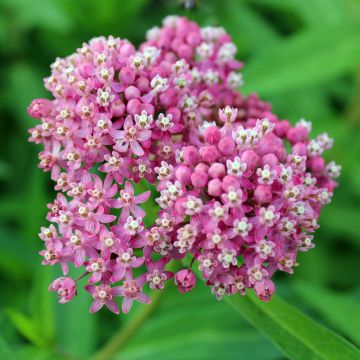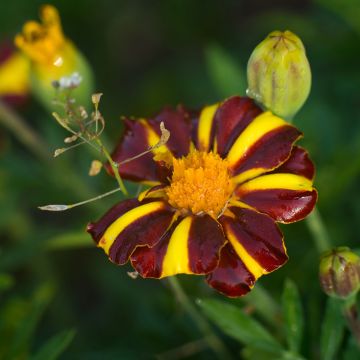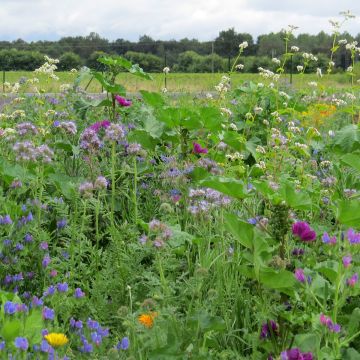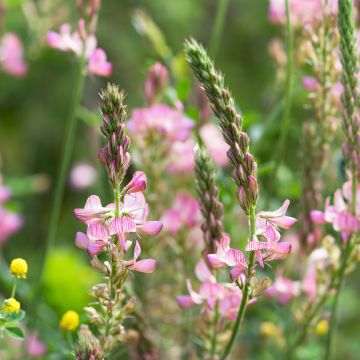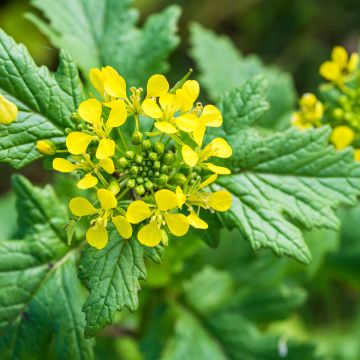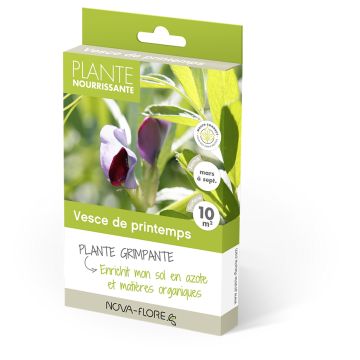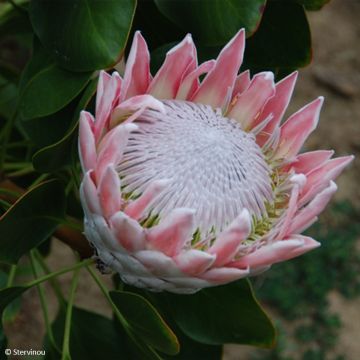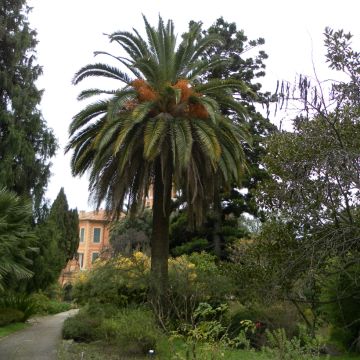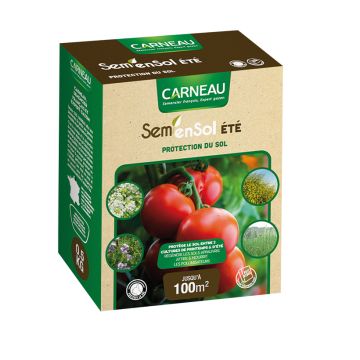

Echinacea purpurea 'Alan's Pride'


Echinacea purpurea 'Alan's Pride'
Echinacea purpurea 'Alan's Pride'
Echinacea purpurea Alan's Pride
Eastern purple coneflower, Purple coneflower
Special offer!
Receive a €20 voucher for any order over €90 (excluding delivery costs, credit notes, and plastic-free options)!
1- Add your favorite plants to your cart.
2- Once you have reached €90, confirm your order (you can even choose the delivery date!).
3- As soon as your order is shipped, you will receive an email containing your voucher code, valid for 3 months (90 days).
Your voucher is unique and can only be used once, for any order with a minimum value of €20, excluding delivery costs.
Can be combined with other current offers, non-divisible and non-refundable.
Home or relay delivery (depending on size and destination)
Schedule delivery date,
and select date in basket
This plant carries a 6 months recovery warranty
More information
We guarantee the quality of our plants for a full growing cycle, and will replace at our expense any plant that fails to recover under normal climatic and planting conditions.
Would this plant suit my garden?
Set up your Plantfit profile →
Description
Echinacea purpurea 'Alan's Pride' is a Echinacea with that beautiful lime green or apple green that Echinaceas can sometimes offer us. Around a very prominent, plump and rounded cone of orange colour, narrow petals bloom, flat to slightly curved, of this bright and acidic colour, a vitamin green tending towards white and yellow. This selection is an excellent summer border plant, of medium height, upright and vigorous. Very melliferous and nectariferous, under the incessant ballet of butterflies, it enlivens the garden.
Echinacea purpurea or Purple Coneflower is part of the Asteraceae family. It is a herbaceous perennial endemic to North America, found in the dry prairies of the eastern United States or in sparsely wooded areas, heathlands or cultivated land. It measures between 60cm (24in) and 1.20m (4ft). The central florets form a conical dome bristling with rough, amber-coloured tubes tipped with reddish-brown, becoming more prominent and darker as the flower blooms. They are surrounded by large heads, pink to violet in the species, and sometimes white. The colours of the flower fade over time. The ligules of the collar spread horizontally and then often adopt a widely involute (inflexed downward or toward the stem) habit. The stems that bear the flowers are very stiff, dark green to purple. The dark green leaves are lanceolate, pubescent, and become sessile at the top of the stem.
The Echinacea purpurea 'Alan's Pride' is a relatively low variety, forming a dense tuft about 65cm (26in) in height on average with a width of about 40cm (16in). Vigorous, it produces numerous flowers between the months of July and September. Of medium size, they have a particularly prominent central core, amber or orange in colour. The ligules surrounding this cone are quite narrow, spoon-shaped. They are slightly curved, giving the flower a touch of whimsy. Another original aspect is their colour, a vibrant lime green, very bright.
The 'Alan's Pride' Echinacea prefers rich, sandy, and well-drained soils. It is not picky about soil pH. Plant it in full sun or light partial shade, on the edge of a border or in a flower meadow. It is hardy and can tolerate periods of drought. In naturalistic gardens, with other undemanding perennials and grasses, it expresses its full potential. But it is versatile and brings vivacity and simplicity to roses and phlox in a romantic garden. Pruning faded flowers stimulates new blooms. However, you can leave some stems and heads in winter: they are very graphic, but more importantly, the seeds are highly prized by birds, especially goldfinches and siskins. As a cut flower or for drying, it enhances bouquets. It is also a resilient and adaptable plant in relation to the soil. It is easy to sow, always with success, in ordinary garden soil.
Note: the different species of Echinacea, especially purpurea, pallida, and angustifolia, are panaceas in Native American pharmacopoeia. They are reputed to be immune stimulants and promote the healing of winter illnesses (colds, flu, respiratory ailments). All cultivars have retained the properties of the original species.
Report an error about the product description
Echinacea purpurea 'Alan's Pride' in pictures
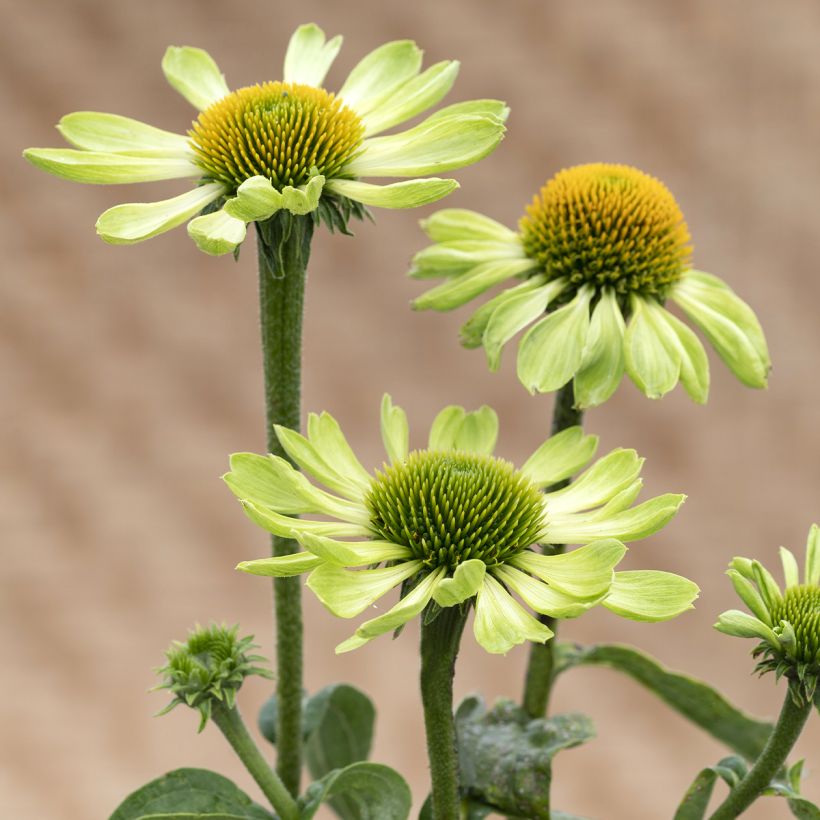

Flowering
Foliage
Plant habit
Botanical data
Echinacea
purpurea
Alan's Pride
Asteraceae
Eastern purple coneflower, Purple coneflower
Cultivar or hybrid
Other Flower seeds A to Z
View all →Planting and care
Sow the seeds of Purple Coneflower early in the spring, from March to May, indoors, in seed trays filled with a special seed compost, maintained at 20-25°C (68-77°F). Cover the seeds with 1.5cm (1in) of compost. Germination takes 7 to 21 days. Take the seedlings outside to harden off the plants gradually, in a cooler area. Then transplant the plants, when they are large enough to handle, once all risk of frost has passed, maintaining a distance of 30cm (12in) between each one.
You can also sow them outdoors from May to July, directly in the ground, in a well-prepared and cleared soil. Thin out the seedlings to leave only one plant every 30 or 40cm (12 or 16in), in full sun.
Purple Coneflower takes its time to establish; indeed, its growth is rather slow. But in return, once in place, it requires no particular care and is very resistant to pests and diseases. It is preferably planted in spring, in a sunny location, in a mixture of compost and garden soil. The soil should be deep and loose to accommodate its root system. Deadhead the flowers as they fade. Divide the clump when flowering slows down. It is a plant with rhizomes that can become invasive if it likes its surroundings. As the plant ages, it becomes more susceptible to aphid attacks and powdery mildew. Mulch the base in May to maintain moisture during summer, as it is sensitive to lack of water during flowering.
Sowing period
Intended location
This item has not been reviewed yet - be the first to leave a review about it.
Similar products
Haven't found what you were looking for?
Hardiness is the lowest winter temperature a plant can endure without suffering serious damage or even dying. However, hardiness is affected by location (a sheltered area, such as a patio), protection (winter cover) and soil type (hardiness is improved by well-drained soil).

Photo Sharing Terms & Conditions
In order to encourage gardeners to interact and share their experiences, Promesse de fleurs offers various media enabling content to be uploaded onto its Site - in particular via the ‘Photo sharing’ module.
The User agrees to refrain from:
- Posting any content that is illegal, prejudicial, insulting, racist, inciteful to hatred, revisionist, contrary to public decency, that infringes on privacy or on the privacy rights of third parties, in particular the publicity rights of persons and goods, intellectual property rights, or the right to privacy.
- Submitting content on behalf of a third party;
- Impersonate the identity of a third party and/or publish any personal information about a third party;
In general, the User undertakes to refrain from any unethical behaviour.
All Content (in particular text, comments, files, images, photos, videos, creative works, etc.), which may be subject to property or intellectual property rights, image or other private rights, shall remain the property of the User, subject to the limited rights granted by the terms of the licence granted by Promesse de fleurs as stated below. Users are at liberty to publish or not to publish such Content on the Site, notably via the ‘Photo Sharing’ facility, and accept that this Content shall be made public and freely accessible, notably on the Internet.
Users further acknowledge, undertake to have ,and guarantee that they hold all necessary rights and permissions to publish such material on the Site, in particular with regard to the legislation in force pertaining to any privacy, property, intellectual property, image, or contractual rights, or rights of any other nature. By publishing such Content on the Site, Users acknowledge accepting full liability as publishers of the Content within the meaning of the law, and grant Promesse de fleurs, free of charge, an inclusive, worldwide licence for the said Content for the entire duration of its publication, including all reproduction, representation, up/downloading, displaying, performing, transmission, and storage rights.
Users also grant permission for their name to be linked to the Content and accept that this link may not always be made available.
By engaging in posting material, Users consent to their Content becoming automatically accessible on the Internet, in particular on other sites and/or blogs and/or web pages of the Promesse de fleurs site, including in particular social pages and the Promesse de fleurs catalogue.
Users may secure the removal of entrusted content free of charge by issuing a simple request via our contact form.
The flowering period indicated on our website applies to countries and regions located in USDA zone 8 (France, the United Kingdom, Ireland, the Netherlands, etc.)
It will vary according to where you live:
- In zones 9 to 10 (Italy, Spain, Greece, etc.), flowering will occur about 2 to 4 weeks earlier.
- In zones 6 to 7 (Germany, Poland, Slovenia, and lower mountainous regions), flowering will be delayed by 2 to 3 weeks.
- In zone 5 (Central Europe, Scandinavia), blooming will be delayed by 3 to 5 weeks.
In temperate climates, pruning of spring-flowering shrubs (forsythia, spireas, etc.) should be done just after flowering.
Pruning of summer-flowering shrubs (Indian Lilac, Perovskia, etc.) can be done in winter or spring.
In cold regions as well as with frost-sensitive plants, avoid pruning too early when severe frosts may still occur.
The planting period indicated on our website applies to countries and regions located in USDA zone 8 (France, United Kingdom, Ireland, Netherlands).
It will vary according to where you live:
- In Mediterranean zones (Marseille, Madrid, Milan, etc.), autumn and winter are the best planting periods.
- In continental zones (Strasbourg, Munich, Vienna, etc.), delay planting by 2 to 3 weeks in spring and bring it forward by 2 to 4 weeks in autumn.
- In mountainous regions (the Alps, Pyrenees, Carpathians, etc.), it is best to plant in late spring (May-June) or late summer (August-September).
The harvesting period indicated on our website applies to countries and regions in USDA zone 8 (France, England, Ireland, the Netherlands).
In colder areas (Scandinavia, Poland, Austria...) fruit and vegetable harvests are likely to be delayed by 3-4 weeks.
In warmer areas (Italy, Spain, Greece, etc.), harvesting will probably take place earlier, depending on weather conditions.
The sowing periods indicated on our website apply to countries and regions within USDA Zone 8 (France, UK, Ireland, Netherlands).
In colder areas (Scandinavia, Poland, Austria...), delay any outdoor sowing by 3-4 weeks, or sow under glass.
In warmer climes (Italy, Spain, Greece, etc.), bring outdoor sowing forward by a few weeks.






























